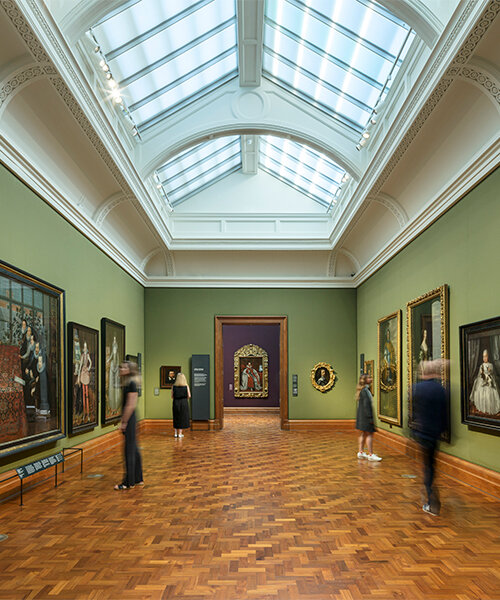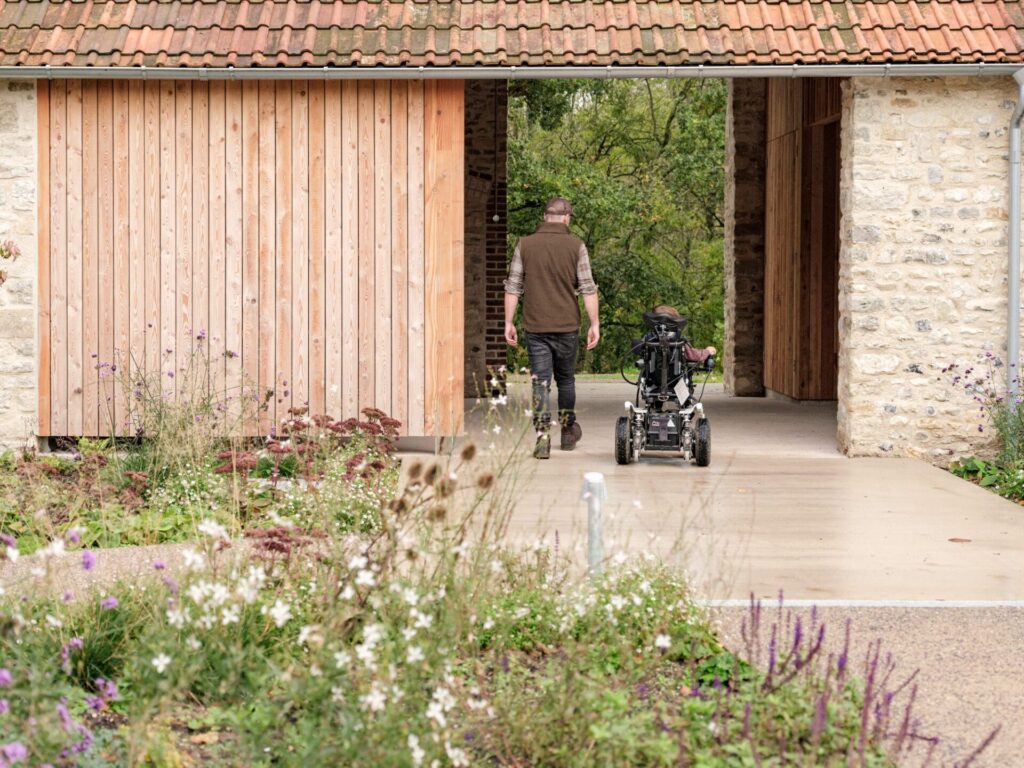
The contenders for the RIBA Stirling Architecture Prize this year couldn’t be more different from one another. Their projects range from an increase in the wall space of the National Portrait Gallery to the revitalization of an infamous estate.
When you try to compare a Hollywood blockbuster with an independent documentary or a symphony orchestra with a busker, you are doing something that is just as difficult. The Elizabeth Line, which cost £19 billion, and the 67-acre regeneration of King’s Cross are competing for the RIBA Stirling Prize, which is awarded annually to the best building in the country. In addition, a small row of council dwellings and a renovated farmyard in Dorset are also in the running for the prize.
It is usually a case of apples and oranges when it comes to the annual architecture gong, but the contrast in scale and cost has never been more severe than it is on this year’s shortlist. Additionally, the National Portrait Gallery, which was constructed in the Victorian era, and the Park Hill housing estate in Sheffield, which was constructed after the war, are two examples of buildings that have undergone modifications that are quite intricate. In what manner will the judges make their decision?

Out of the two major animals, the Elizabeth line has a better chance of winning. It is the one piece of transportation infrastructure in the United Kingdom that gives you the impression that you are living in the 21st century. It seems like a bright and expansive universe filled with airy tunnels and elegant sliding doors. The part that is underground is the one that is up for grabs, specifically the “line-wide” design that Grimshaw architects and Atkins engineers created. They have built a streamlined cosmos of white concrete paneling, which incorporates up-lighting by Equation and beautiful signage totems by Maynard. A futuristic setting has been created as a result, which provides commuters with the impression that they are strolling through the sci-fi halls of Stanley Kubrick’s spaceship from the film 2001: A Space Odyssey. One of the complaints that has been voiced is that all of the stations are the same. It does not have the mosaic and enamel platform decorations that are characteristic of the Central Line, nor does it have the architectural flourishes that are characteristic of the Jubilee Line. These factors aid a crowded train traveling at high speed in being able to recognize the stations. Although the Lizzie line is a marvel of efficiency, it is also a boring blur of beige all the way through.
The Allies, Morrison, and Porphyrios Associates-masterplanned King’s Cross development takes a different approach than the other developments. Located on lands that were formerly used for railways, this is a diverse collection of more than thirty different architects who are working on twenty new streets and ten new squares. For example, the bricky remains of industry have been transformed into an arts university, a shopping mall, and several dining ideas, in addition to new houses and offices. This is an example of a marriage of old and new that has been masterfully executed. The architects were granted a great deal of leeway, with the sole stipulation that they “respect” one another when working together, and the outcomes are a diverse collection of designs. Porphyrios created an imposing neoclassical pile, while Alison Brooks created a whimsical tower of bouncing brick arches. Thomas Heatherwick and Bjarke Ingels were responsible for all of these structures’ designs. They were responsible for designing the enormous skyscraper that houses Google’s new headquarters. It is the public areas that have been more successful than the structures, particularly the Granary Square, which is filled with fountains and is particularly well-known. Like the slightly soulless world that is growing on the Olympic site, the concept seems to be lacking any grit, despite the fact that it is more sophisticated than the majority of past redevelopment initiatives of its magnitude. Is it too big to win the prize, being that it is a sizeable portion of the city that was created by a number of different hands? Maybe it was packaged together since there is not a single structure in this area that would be worthy of receiving the award.

The local council built this tiny street of houses in Hackney, which is in east London. Chowdhury Walk is only a fraction of the size of King’s Cross, which is a much larger neighborhood. Al-Jawad Pike, a young architect, created it as an example of infill development and replaced a row of garages and parking spaces with eleven new homes. Seven of the homes are socially rented, while the other four are sold at market price to help pay for the rest of the homes. Each of the houses has a recessed porch that is framed by raised granite planters, and the houses are spaced at an angle, which reduces the amount of overlooking and forms a sawtooth profile down the street. The cross-laminated timber homes are constructed with triple glazing and solar panels on the roof, which results in a significant reduction in the amount of money that occupants spend on their monthly fuel costs. A jaunty upside-down arched window on the end of the terrace and cobblestone paving that gives way to pools of greenery along the pedestrianized roadway are just two examples of the project’s many delightful features that raise it well above the mundane. This is a lesson on how to make everyday dwelling feel like something special, and it ought to be accepted as the norm. However, due to the high cost of being of this caliber, it is highly improbable that it can be replicated.
When it came to the meticulous renovation of the National Portrait Gallery, which cost 41.3 million pounds and was carried out by Jamie Fobert Architects and Purcell, a conservation specialist, financial restrictions were less of a worry. Silk-lined walls that are made to order, polished marble terrazzo floors, and magnificent walnut display cases are all elements that contribute to this regal vision. However, the true inventiveness is largely concealed. A careful procedure known as keyhole surgery, which involved making strategic cuts and connections, resulted in the creation of twenty percent extra space from the currently existing maze of rooms. Classrooms were cut out below ground, spilling on to a new sunken patio, and a new entrance was aggressively slashed through the listed stone front. Opened windows that had previously been barred were opened up, allowing light to flow in. An ingenious solution to the problem of access is a public forecourt that slopes downward. This eliminates the “accessible” entry that was previously located down a side alley and means that all visitors are on the same level. Because of the project, the location has undergone a complete and total transformation, which can sometimes be rather subtle.

Clementine Blakemore Architects created Wraxall Yard, a carefully transformed dairy farm in Dorchester into a community space, educational smallholding, and collection of vacation apartments. One of the primary concerns of the project was to rethink accessibility. The designers, in collaboration with the Centre for Accessible Environments, have created a location that eliminates the requirement for wheelchair users to have separate routes, ramps, and handrails. Additionally, the interiors of the building incorporate sinks that have integrated grab-handles, rise-and-fall worktops, and ceiling hoists, all without giving the impression of being institutional. The existing buildings were preserved to the greatest extent possible, and new additions were constructed with the use of reclaimed materials and natural, low-carbon products, such as insulation made of wood fiber and cork from recycled materials. The outcome is a poetic environment that serves to involve everyone, from the elderly who live alone to young people who struggle with mental health difficulties, in participating in activities that take place in rural areas.Skip over the promotion for the newsletter.

ochre,A massive undertaking that was initially considered for inclusion on the Stirling shortlist more than a decade ago has at long last entered its second phase. Redesigning the much-maligned Park Hill housing complex, which is situated on the hilltops above Sheffield like a concrete cliff, has been a difficult process that has been going on for twenty years. Every stage of its metamorphosis is a reflection of the time it was imagined, and the most recent one, which was designed by Mikhail Riches, who were awarded the Stirling Prize in 2019 for their innovative low-energy social housing in Norwich, is the most impressive development to date. 195 apartments have been revived, with the majority of the historic fabric being preserved while the energy efficiency of the building has been greatly improved. As a result of the cleaning of the brickwork, a gradient has been revealed, beginning with terracotta at the base and progressing through ochre and ending with mustard yellow bricks at the top floor. The windows have been made larger and more thermally efficient, and the exterior walls have been insulated with colored render in heathery tones that were inspired by the Peak District, which is located quite close by. In this particular phase, all of the homes are private, which signifies the council’s shortsighted transfer of a public asset into the hands of a developer, Urban Splash. This is one of the arguments that can be made against it. In both the previous and upcoming phases, there will be twenty percent affordable housing. On the other hand, the lessons are here for more courageous councils in other places to take note of and implement comparable actions themselves.
Park Hill would be a deserved winner since it is the project that makes use of the technologies that are most widely applicable for addressing one of the most significant difficulties that the nation is currently experiencing. This difficulty is the upgrading of postwar housing estates rather than their demolition in order to deal with the climate emergency. But how seductive is this essay in insulation, and will it be able to entice the judges?